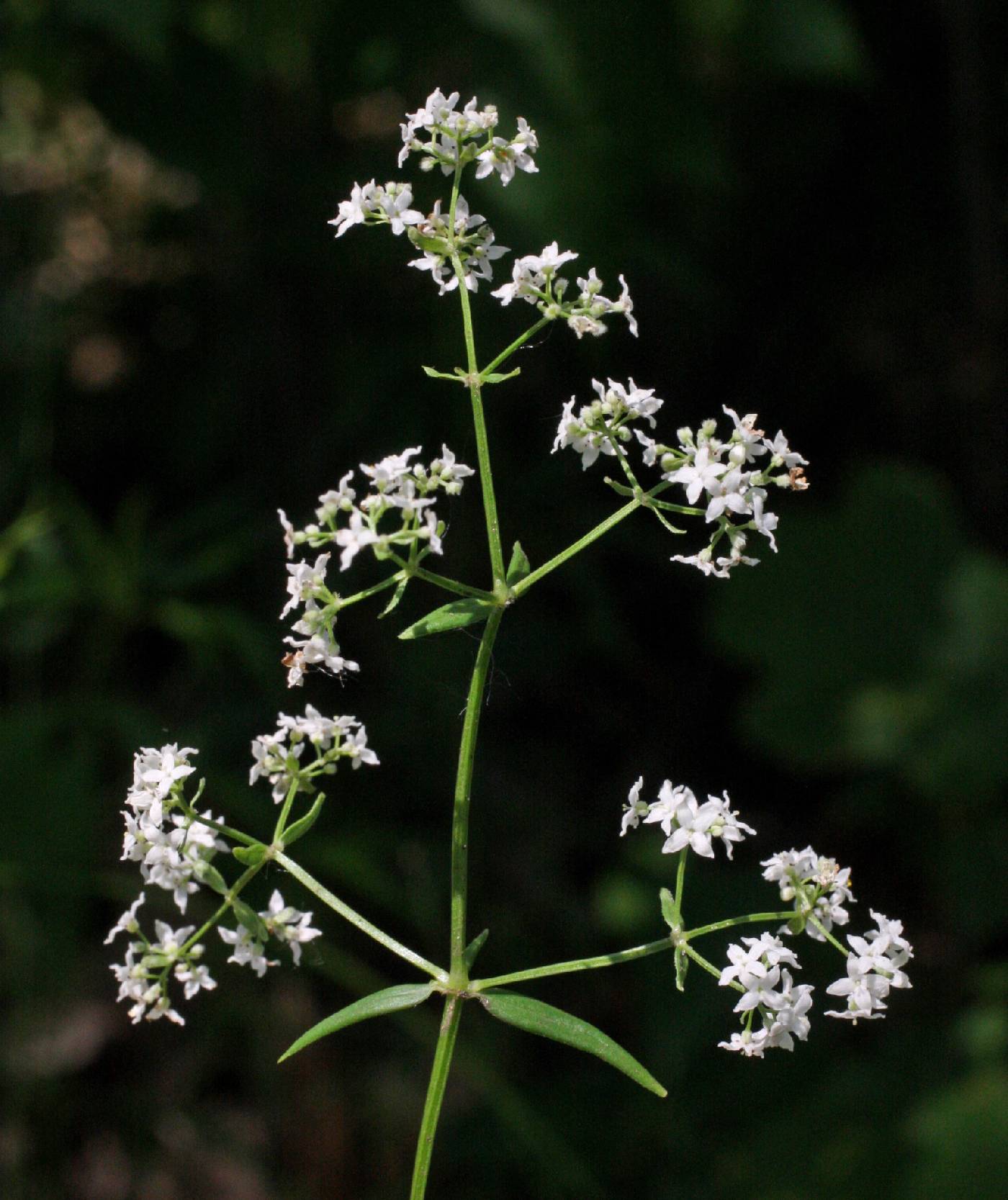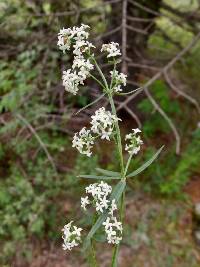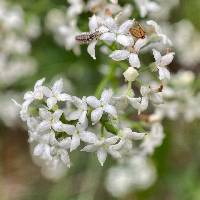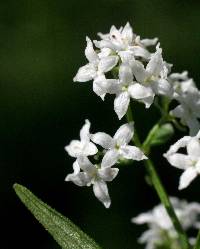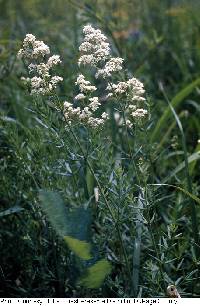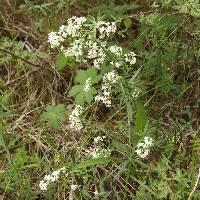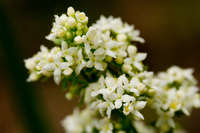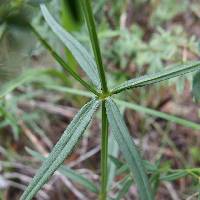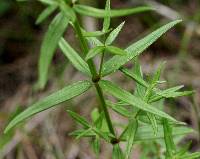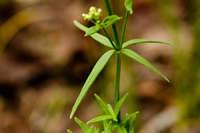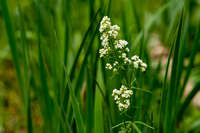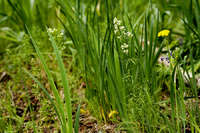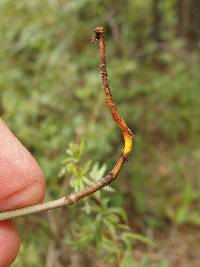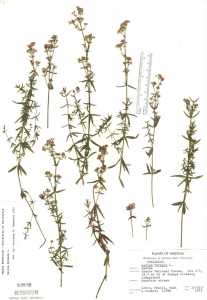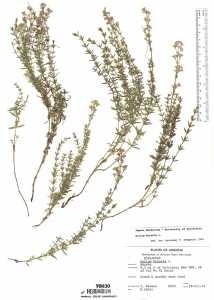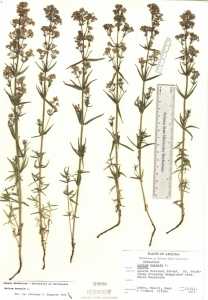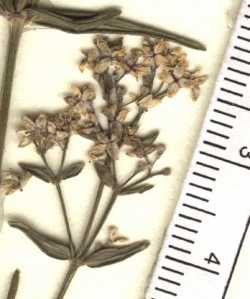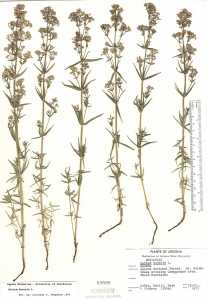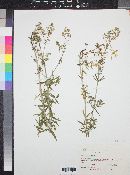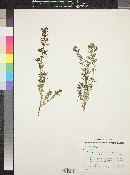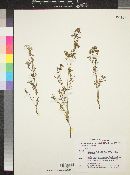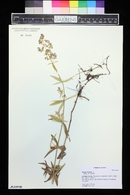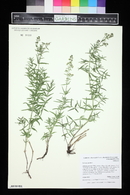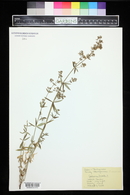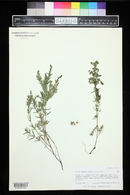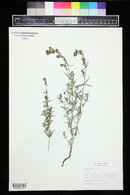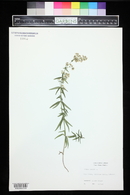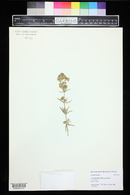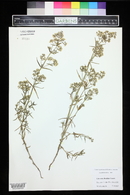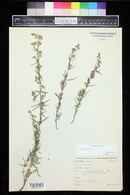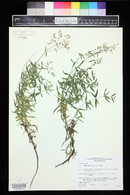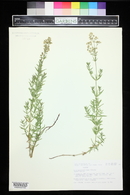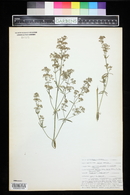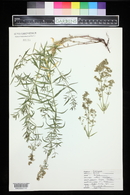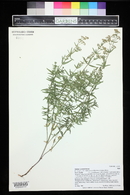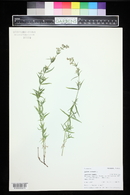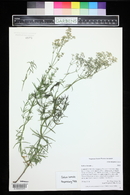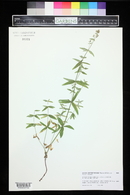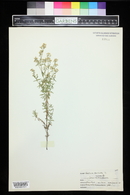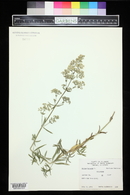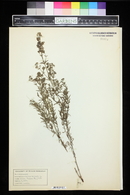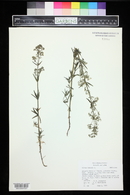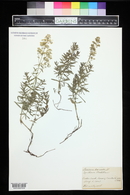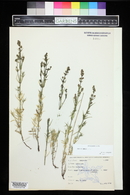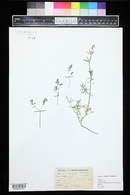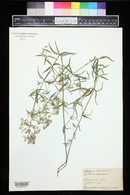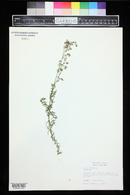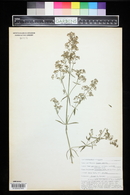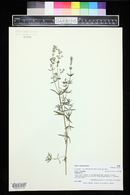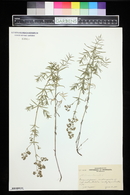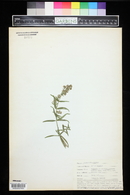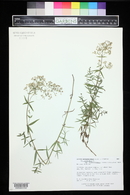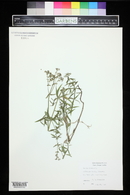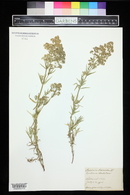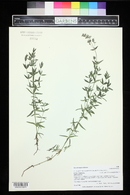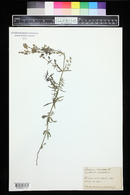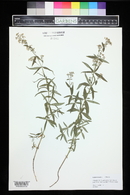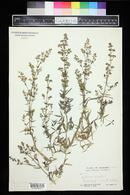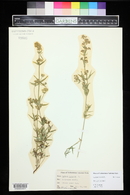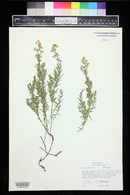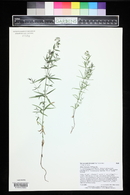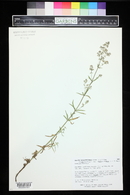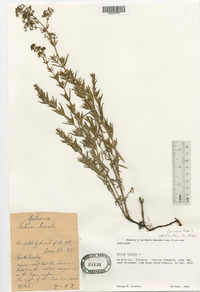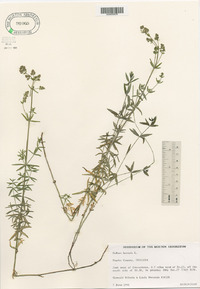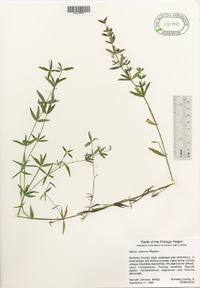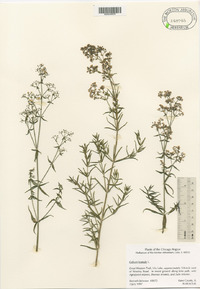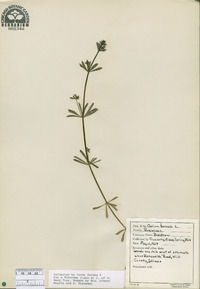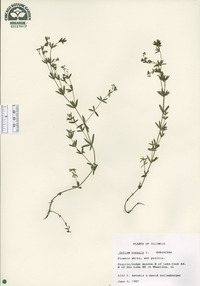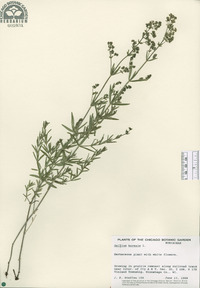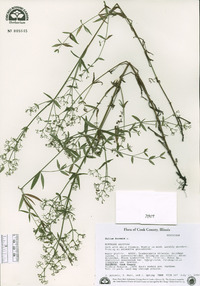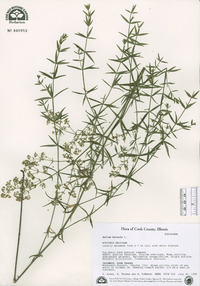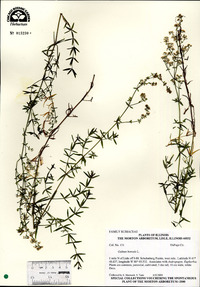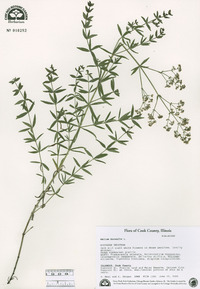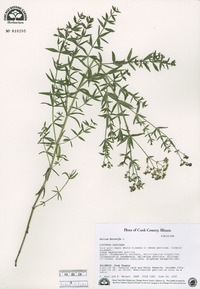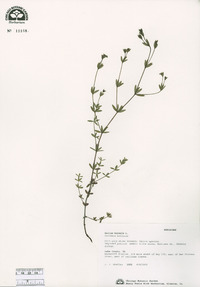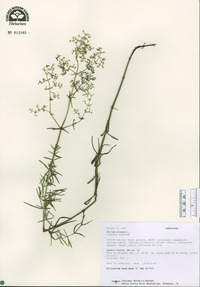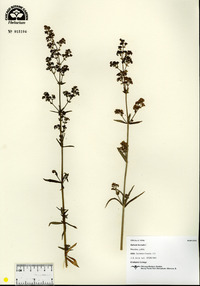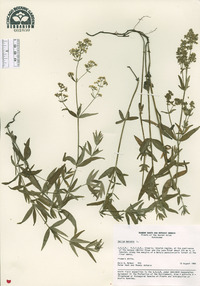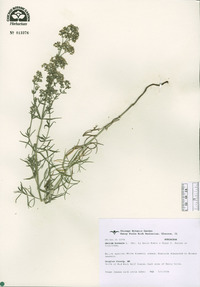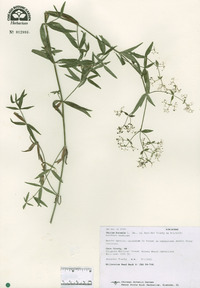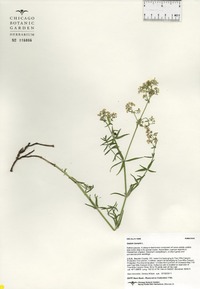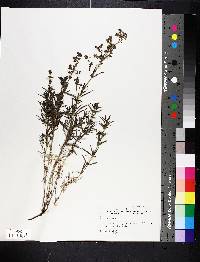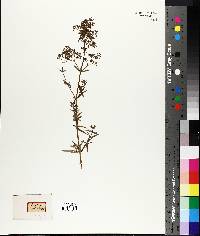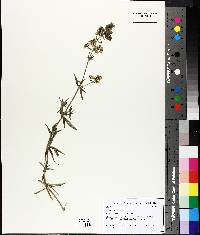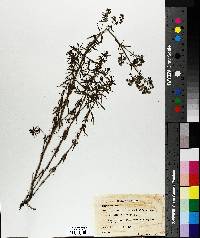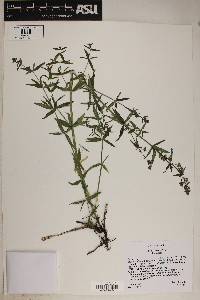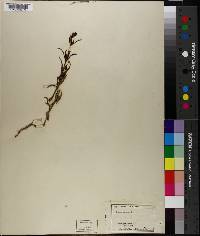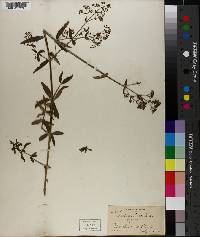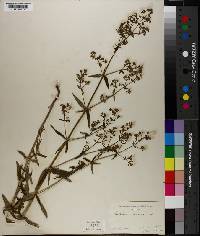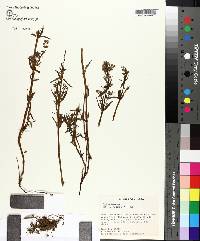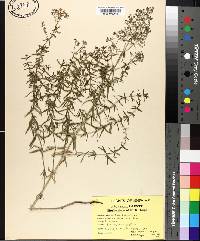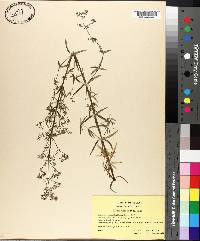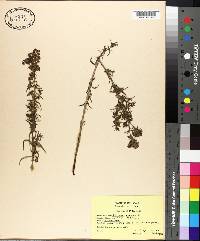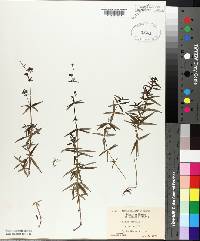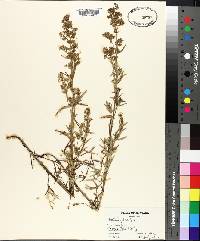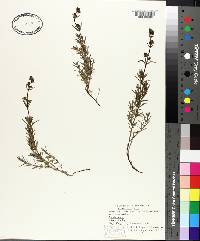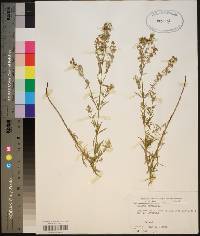
|
|
|
|
Family: Rubiaceae
Northern Bedstraw
[Galium boreale subsp. septentrionale (Roemer & J.A. Schultes) Hara, moreGalium boreale var. boreale L., Galium boreale var. hyssopifolium (Hoffmann) DC., Galium boreale var. intermedium Dc., Galium boreale var. kamtschaticum (Maxim.) Nakai, Galium boreale var. linearifolium Rydb., Galium boreale var. scabrum Dc., Galium boreale var. septentrionalis (Roem. & Schult.) H. Hara, Galium boreale var. typicum G. Beck, Galium hyssopifolium Hoffmann, Galium septentrionale Roemer & J.A. Schultes, Galium strictum Torr.] |
Plant: perennial herb; 3-6 dm high, nearly glabrous, erect Leaves: 4 per node, 13-31 mm long, linear to broadly lanceolate, 3-veined, minutely scaberulous, the apices mostly obtuse INFLORESCENCE: flowers perfect, numerous in a more or less condensed terminal, nearly leafless panicle of cymules Flowers: corollas rotate or a little cupped at base, the 4 lobes ovate, the apices blunt; ovaries generally densely hairy with short upwardly-curved hairs Fruit: FRUITS dry, with short bristles, the mericarps becoming reniform Misc: Meadows, streamsides, moist shady places; 2150-2900 m (7000-9500 ft); Jun-Aug REFERENCES: Dempster, Lauramay T. 1995. Rubiaceae. J. Ariz. - Nev. Sci. 29(l): 29. Perennial herb with a creeping rhizome 20 cm - 0.8 m tall Leaves: in whorls of four, stalkless, 1.5 - 4.5 cm long, to about 5 mm wide, linear lance-shaped with a minutely rounded tip, three-veined, hairy-fringed (ciliate), sparsely hairy on the lower surface. Inflorescence: a terminal, branched, showy cluster (cymose panicle) of numerous flowers, about 10 cm long and wide. Flowers: white to creamy, 3.5 - 7 mm wide, more or less flat and circular in outline, with four short lobes. Lobes about 1 mm long and wide, pointed. Stamens four, alternating with lobes, shorter than corolla. Styles two, short. Fruit: dry, indehiscent, 2 mm wide, spherical, paired, separating when ripe, sometimes shortly hairy, one-seeded. Stems: numerous from base, ascending to upright, slender, four-angled, branched, short-bearded just beneath the nodes, sometimes minutely rough-hairy. Similar species: No information at this time. Flowering: late May to early September Habitat and ecology: Found in a variety of habitats, including prairies, moist meadows, and fields. Occurence in the Chicago region: native Etymology: Galium comes from the Greek word gala, meaning milk, referring to the plants that are used to curdle milk. Boreale means "from the North." Author: The Morton Arboretum Kearney and Peebles 1969, McDougall 1973, Martin and Hutchins 1980 Duration: Perennial Nativity: Native Lifeform: Subshrub General: Suffrutescent perennials,30-80 cm tall, stems angled, often winged, erect to decumbent or reclining, sometimes onto leaves and stems boring plants, herbage hispid, the hairs appressed backwards or down. Leaves: Small, thin, linear to broadly lanceolate, appearing whorled, stiff and firm, distinctly 3-nerved, 20-50 mm long. Flowers: Bright white, small, 3-4 mm in diameter, perfect or unisexual, not closely subtended by bracts, pedicellate, borne in terminal panicles or in glomerules, or flowers solitary in the axils. Fruits: Paired fruits, tuberculate, glabrous or finely hispidulous, indehiscent, not fleshy and seperating at maturity. Seeds with a deeply concave face. Ecology: Found in meadows and on damp slopes from 6,000-9,500 ft (1829-2896 m); flowering July-September Notes: The keys to this species are the woody caudex, the retrorsely appressed hairs, the stiff, broadly or linear-lanceolate leaves with 3 distinct nerves, and the white flowers. Ethnobotany: Used as a contraceptive and abortifacient, as a diuretic, as a dye, and it was also considered by some to be poisonous. Etymology: Galium is from the Greek word gala, milk, an allusion to the fact some species are used to curdle milk, while boreale means northern. Synonyms: None Editor: LCrumbacher, 2011 Erect perennial 2-8 dm, the numerous stems commonly short- bearded just beneath the nodes, otherwise glabrous or scaberulous; lvs in 4's, glabrous or scabrous, lance- linear, 1.5-4.5 cm, 3-nerved, the tip minutely rounded, not mucronate; sterile axillary branches with smaller lvs often developed; fls numerous in terminal, rather showy cymose panicles, with white or slightly creamy cor 3.5-7 mm wide; fr 2 mm, glabrous or with short, straight or curled (not hooked) hairs; 2n=44, 66. In a wide variety of not too dry habitats; circumboreal, s. in Amer. to Del., Ky., Mo. and Calif. June, July. Gleason, Henry A. & Cronquist, Arthur J. 1991. Manual of vascular plants of northeastern United States and adjacent Canada. lxxv + 910 pp. ©The New York Botanical Garden. All rights reserved. Used by permission. From Flora of Indiana (1940) by Charles C. Deam [Deam recognizes three varieties based upon differences in fruit indument.] [Fruits of var. boreale have long straight hairs. This form is] restricted to the lake area. Our specimens are from moist, sandy soil along railroads and roadsides and one is from a tamarack bog. [Variety hyssopifolium has glabrous fruit. It is] restricted to the lake area and found in dry, sandy soil along railroads and roadsides, and less frequently in bogs and marshes. [Variety intermedium has short appressed or incurved hairs. This form is] local in the lake area in moist, sandy soil in black oak woods, on borders of lakes, and along roadsides. |
|
|
|
This project was made possible in part by the Institute of Museum and Library Services [MG-70-19-0057-19].
Powered by Symbiota

